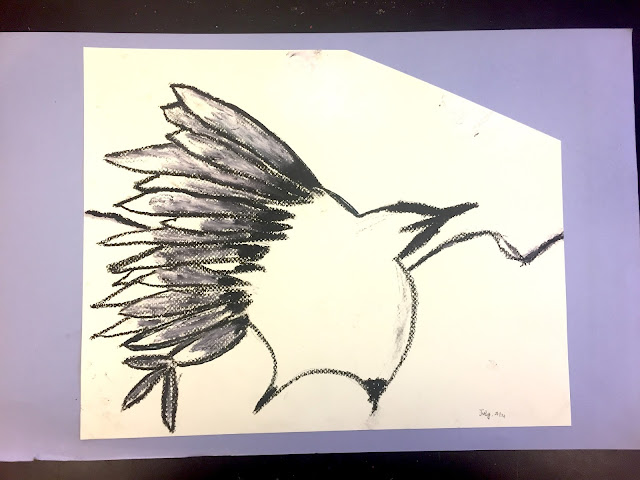Our students are learning how to become innovators, problem-solvers, and authentic art learners. How? Our class allows the freedom for students to pursue their interests by Teaching for Artistic Behavior, or TAB.
Our students are learning how to think and work like artists in the studio. We watch for 8 Studio Habits of Mind, as defined and researched by choice-based art teachers such as Lois Hetland and others in the book, "Studio Thinking" and Studio Thinking 2".
1-
Develop Craft - Artists in our classroom learn the limitations and possibilities of different mediums. They practice and experiment and are able to gain mastery by revisiting mediums. In addition, they learn to care for their art materials and studio space, as an artist would.
2-
Understand Art Worlds - Artists learn about different artists, art history, and the realm of art. They learn to engage in a community of other artists with their peers through collaboration and weekly critiques.
3-
Envision - Artists imagine and create mental pictures of what is not observable. They imagine possible outcomes.
4-
Express - Artists create works that convey a personal meaning, idea, or feeling.
5-
Engage and Persist - Artists solve problems and develop a personal interest in an effort to focus and persevere at art tasks.
6-
Reflect - Artists learn to think and talk to others about their work. They learn to judge their own work and process in relation to the art realm.
7-
Stretch and Explore - Artists learn to play, experiment, and embrace the opportunity to learn from mistakes.
8-
Observe - Artists view more closely and carefully, with attention to visual context. They see things that others may miss.
(Hetland et al., "Studio Thinking 2: The Real Benefits of Visual Arts Education, Second Edition", 2013, Teachers College Press, New York, NY, pg. 6)
This process of TAB involves opening centers in which students are allowed to explore mediums and materials, based on their interests. We begin the school year with building blocks in the form of basic skills such as observational drawing, learning about the Elements of Design, and basic composition.
 |
| Students draw basic forms from observation. They learn how to create the illusion of 3D forms on 2D drawings by adding value and cast shadows. |
 |
8th Grade cadets Graham, Lorenzo, Ye, and Racine tackle a still life in pencil.
Once students have had practice exercising the basics, they are given to opportunity to explore new mediums in each center, guided by an overarching theme. Our artists are responsible for researching two artists that inspire them, three thumbnail sketches in their sketchbooks, class critiques, readying artwork for display, and filling out a self-assessment. Throughout the course of the year, our students are demonstrating all eight Studio Habits of Mind. Through this process, we promote independence, innovation, self-regulation, and an appreciation of the arts.
For more information, check out Teaching for Artistic Behavior
|




















